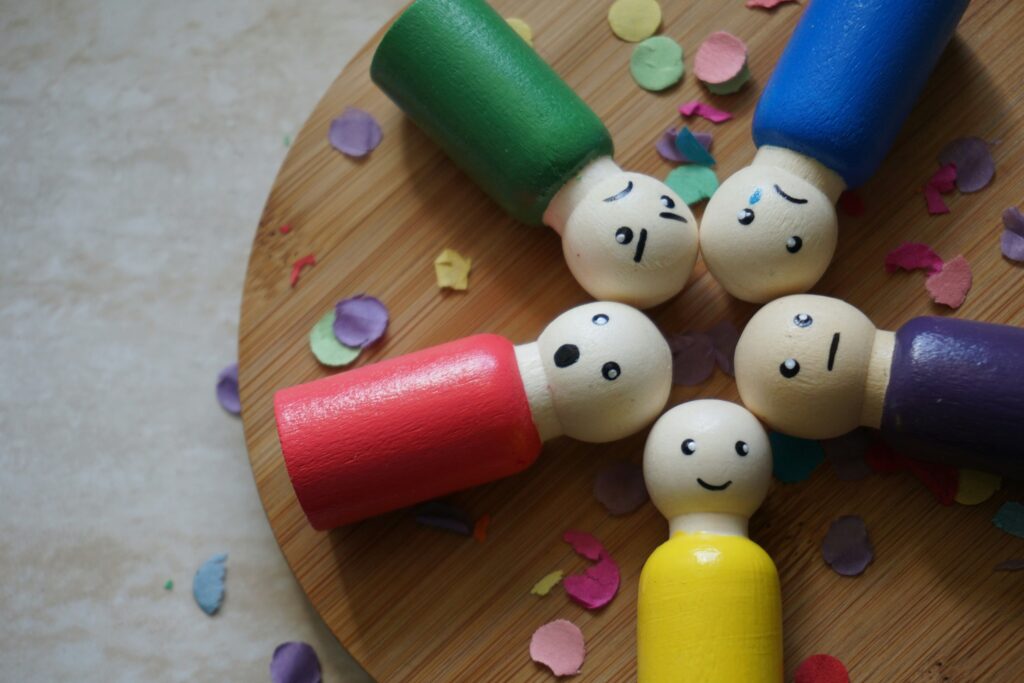This post is also available in Dutch.
This summer, we’re kicking off a new series in collaboration with BrainHelpDesk—a platform that was relaunched this spring. On the BrainHelpDesk, you can ask questions about the brain, and receive an answer by an expert, inside or outside the Donders Institute.
As we grow up, our emotional lives become richer and more complex. Whereas the dominating emotions from when we were toddlers might have been emotions like joy or frustration, adolescence introduces an entirely new palette, like boredom, jealousy, self-consciousness, and existential dread, as shown in the Pixar movie Inside Out 2. This growing emotional complexity isn’t just part of puberty; it’s the result of major changes in the developing brain. But how does this emotional expansion really work—and are these feelings just in our heads, or also in our hearts?
Growing up means growing more complex emotions
In Inside Out, we met the protagonist Riley’s core emotions: Joy, Sadness, Anger, Fear, and Disgust, each doing their important part in helping her navigate childhood. In the sequel Inside Out 2, Riley and her emotions are back, but it is getting crowded in her cartoonized emotional control hub: with the onset of puberty, new emotions join the team.
These additions—Anxiety, Embarrassment, Envy, and Ennui—weren’t chosen at random. They reflect the emotional changes that typically emerge during early adolescence, when the brain gains a more sophisticated understanding of social context, future consequences, and self-perception. These emotions are not just bigger or more intense than childhood ones—they are qualitatively different. For example, embarrassment requires an understanding of how others might perceive you, and anxiety involves anticipating future outcomes. While some of these emotions initially seem ‘bad’, we learn throughout the movie that they are all equally important for a nuanced, rich emotional experience.
Prefrontal cortex maturation drives emotional development
Basic emotions such as fear, joy, and anger are present from infancy and help us survive and bond with others. These are driven by evolutionarily ancient brain regions, such as the amygdala, hypothalamus, and brainstem, which are some of the earliest regions to develop.
As puberty begins, a surge in sex hormones such as estrogen and testosterone interacts with brain development, particularly in the prefrontal cortex—the region responsible for planning, reasoning, and emotional regulation. At the same time, long-range connections between the prefrontal cortex and emotion-processing regions like the amygdala strengthen. This allows for more nuanced emotional responses and the emergence of feelings that depend on social comparison, abstract thought, and identity construction.
Emotions are made in the brain, not the heart
What we have discussed so far all points towards the brain as the culprit for the emotional turmoil that often characterizes puberty, but emotions are often associated with the heart. So, should we rebrand the feeling of unreciprocated love from heartache to brain-ache? This is the topic of this article by the brain helpdesk: Are emotions experienced in the heart or the brain?
There are different theories about how emotions arise, with the James-Lange theory suggesting that bodily reactions come first and are then interpreted by the brain as emotions, while the Cannon-Bard theory proposes that bodily and emotional responses happen simultaneously and independently. Research on the brain’s emotion pathways, like those involving the amygdala, supports a more nuanced view—emotions likely originate in the brain but are shaped by how we perceive signals from our body. So while emotions may not come from the heart, they’re certainly felt throughout the body.
Emotions change throughout our whole lifetime
Understanding how emotions evolve can help us support teens and young adults as they learn to regulate new feelings. And as science shows, these emotional developments don’t stop in adolescence: our emotional brain continues to adapt across life. Inside Out 2 captures how adolescence is not just about mood swings, but the emergence of more complex emotional experiences. So next time your inner Anxiety takes the wheel, remember: it’s not your heart talking. It’s your wonderfully complex, ever-changing brain.
Credits
Written, edited, and translated by Siddharth Chaturvedi, Natalie Nielsen & Helena Olraun
Photo by Joanne Glaudemans on Unsplash
